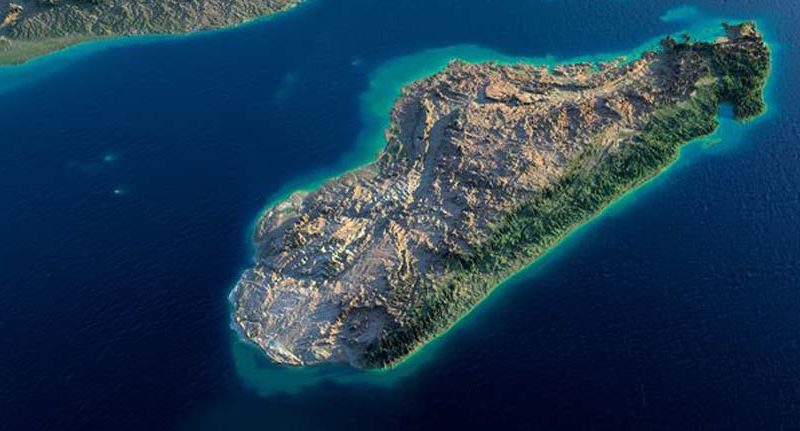Madagascar Big Island – A Fascinating Paradise of Nature, Culture, and Adventure
Few destinations on Earth combine breathtaking beauty, rare wildlife, and vibrant culture quite like Madagascar Big Island. Known locally as Nosy Be — meaning “big island” in Malagasy — this tropical haven lies just off Madagascar’s northwest coast. Its volcanic peaks, lush forests, and turquoise waters make it a dream destination for nature lovers and adventure seekers alike.
However, the phrase Madagascar Big Island also refers to the main island of Madagascar itself — the fourth largest island in the world. This vast land is filled with remarkable biodiversity, making it a wonderland for explorers. Whether you focus on Nosy Be or the main island, you’ll find both destinations equally fascinating, diverse, and unforgettable.
In this detailed guide, you’ll discover why Madagascar Big Island deserves a top spot on your travel list — from its geography and wildlife to travel tips, itineraries, and cultural highlights.
What Is the Madagascar Big Island?
H2: Understanding the Meaning Behind “Madagascar Big Island”
The term Madagascar Big Island can refer to two remarkable places:
-
Nosy Be: a small yet lush volcanic island, often called Madagascar’s crown jewel.
-
The main island of Madagascar: the “Great Island,” home to some of the world’s most unique ecosystems.
Both are part of the same extraordinary country. Yet, Nosy Be is more accessible for most travelers, offering beaches, marine parks, and a relaxed island vibe. Therefore, this article mainly focuses on Nosy Be — while connecting it to the wider wonder of Madagascar itself.
Geography and Climate of Madagascar Big Island
H2: Where Is Madagascar Big Island Located?
Situated off the northwest coast of Madagascar, Nosy Be lies in the warm waters of the Mozambique Channel. The island measures roughly 30 km by 19 km and was formed by ancient volcanic activity. Consequently, its terrain features rolling hills, crater lakes, and fertile forests.
Moreover, Nosy Be is surrounded by smaller islands such as Nosy Komba, Nosy Tanikely, Nosy Sakatia, and Nosy Mitsio, all of which can be visited by boat. Each of these neighboring isles offers distinct landscapes and experiences, making island-hopping an essential part of any visit.
H3: The Climate – Warm, Tropical, and Pleasant Year-Round
Nosy Be enjoys a tropical climate, meaning warm temperatures and sunshine for most of the year.
-
Dry Season (May–October): Ideal for travel, with low humidity, calm seas, and clear skies.
-
Wet Season (November–April): Hotter and rainier, yet also greener and more vibrant.
As a result, the best time to visit Madagascar Big Island is between June and September, when the weather is at its most pleasant and outdoor activities are at their best.
Why Visit Madagascar Big Island?
H2: The Allure of Nosy Be – Madagascar’s Big Island of Dreams
There are many reasons why travelers fall in love with Madagascar Big Island. To begin with, the island combines stunning beaches, wildlife encounters, and authentic culture in one unforgettable package.
Furthermore, the relaxed rhythm of life, the friendly people, and the fragrant air filled with ylang-ylang flowers make Nosy Be an island that appeals to all senses.
Here’s what makes it so captivating:
-
Unspoiled beaches perfect for swimming and sunbathing.
-
Vibrant coral reefs ideal for snorkeling and diving.
-
Rainforests teeming with lemurs and colorful chameleons.
-
Aromas of vanilla and ylang-ylang floating through the air.
-
Easy access via flights and boats from mainland Madagascar.
In short, Nosy Be is the perfect mix of relaxation and exploration — a fascinating microcosm of Madagascar itself.
Top Attractions on Madagascar Big Island
H2: Things to Do on Madagascar Big Island (Nosy Be and Beyond)
Although Nosy Be is small in size, it’s filled with exciting things to see and do. From natural reserves to cultural experiences, the island offers adventures for every kind of traveler.
H3: Lokobe Reserve – A Window Into Madagascar’s Wild Heart
Firstly, no visit to Nosy Be is complete without exploring Lokobe Reserve. This protected forest is home to lemurs, frogs, and the vivid panther chameleon, one of the island’s icons.
Walking beneath the canopy, you’ll hear the sounds of birds and insects all around. Additionally, local guides will share fascinating stories about the plants and animals, making your experience both educational and inspiring.
H3: Nosy Tanikely Marine Park – A Natural Aquarium
Secondly, just a short boat ride away lies Nosy Tanikely, a tiny island surrounded by a protected marine park. Beneath its crystal-clear waters, a kaleidoscope of marine life awaits: colorful corals, sea turtles, starfish, and schools of tropical fish.
Because visibility is excellent, it’s one of the best snorkeling and diving sites in Madagascar. Consequently, both beginners and experienced divers love it.
H3: Nosy Komba – The Black Lemur Island
Another unforgettable stop is Nosy Komba, also known as the Island of Lemurs. Here, you can get close to friendly black lemurs, visit artisan villages, and shop for handmade crafts.
Unlike Nosy Be, Nosy Komba feels more traditional. Therefore, it’s perfect for travelers seeking peace and authenticity. You can spend the day exploring trails or enjoying freshly grilled fish by the sea.
H3: Ylang-Ylang and Spice Plantations
Nosy Be’s nickname, “the perfumed island,” comes from its fragrant ylang-ylang plantations. These yellow flowers are distilled into essential oils used in world-famous perfumes.
During plantation visits, you can watch the distillation process, smell freshly harvested flowers, and learn about local crops such as vanilla, cocoa, and coffee. Moreover, these tours support small farmers, making them both enjoyable and responsible.
H3: Hell-Ville Market and Cultural Encounters
For a deeper cultural experience, head to Hell-Ville, Nosy Be’s main town. Its bustling market overflows with colors, scents, and smiles. You’ll find fresh fruit, spices, fish, and handmade souvenirs.
In addition, wandering through Hell-Ville gives you insight into the island’s blend of Malagasy and Creole influences. It’s a great place to interact with locals, taste street food, and experience the island’s daily rhythm.
H3: Beaches, Sunsets, and Island Hopping
Finally, don’t forget to simply relax. Nosy Be’s beaches — such as Andilana, Ambatoloaka, and Madirokely — are postcard-perfect.
Moreover, you can take a sunset cruise around the island or hop between nearby islets. Every sunset paints the sky in orange and pink, making it a photographer’s dream.
In short, every corner of Madagascar Big Island offers moments of pure wonder.
Wildlife and Nature of Madagascar Big Island
H2: A Biodiversity Hotspot Like No Other
Madagascar is often called the “Eighth Continent” because its wildlife evolved in isolation for millions of years. As a result, over 80% of its species exist nowhere else.
On Madagascar Big Island, you might spot:
-
Lemurs leaping through trees
-
Panther chameleons changing colors
-
Tiny geckos hiding in leaves
-
Rare birds gliding over forests
-
Sea turtles and dolphins in coastal waters
Each encounter reminds visitors just how fascinating and fragile this ecosystem is.
H3: Conservation and Responsible Tourism
Unfortunately, like many tropical regions, Madagascar faces ecological challenges such as deforestation and coral reef damage.
However, local organizations and tour operators are working hard to protect these habitats. By choosing eco-lodges, avoiding plastic waste, and hiring local guides, travelers can contribute positively to conservation efforts.
Therefore, traveling responsibly isn’t just an option — it’s essential for preserving this island paradise.
Culture and People of Madagascar Big Island
H2: The Soul of the Island
Madagascar’s culture reflects a unique mix of African, Asian, and European influences. On Nosy Be, most residents belong to the Sakalava community, known for their warm hospitality and deep respect for ancestors.
Moreover, music and dance are part of daily life. During festivals, rhythmic drum beats fill the air while traditional ceremonies celebrate the island’s rich spiritual heritage.
H3: Local Cuisine – A Taste of the Big Island
Food is another wonderful way to discover Malagasy culture. Meals often combine French flair with tropical ingredients.
For example:
-
Try romazava, the national beef stew.
-
Taste freshly grilled seafood caught that morning.
-
Enjoy sweet banana fritters or coconut desserts.
-
Sip locally distilled rum infused with vanilla or ylang-ylang.
In addition, meals are social events — shared slowly among friends and family, reflecting the island’s laid-back rhythm.
Planning Your Trip to Madagascar Big Island
H2: How to Get There and When to Visit
Getting to Nosy Be is relatively easy. The island’s Fascene International Airport connects to Antananarivo, Addis Ababa, Paris, and Milan.
Alternatively, you can reach it by boat from the mainland port of Ankify. The short crossing offers stunning coastal views.
When planning your trip, consider visiting between May and October to avoid heavy rains. Moreover, booking flights and accommodation early helps secure the best options during peak months.
H3: Accommodation Options
Whether you prefer luxury resorts or eco-friendly lodges, Madagascar Big Island caters to all budgets.
-
Luxury: Andilana Beach Resort or Nosy Sakatia Lodge
-
Mid-range: Hotels in Ambatoloaka and Madirokely
-
Eco-stays: Lodges near Lokobe Reserve
In addition, many properties emphasize sustainability, offering solar power, locally sourced meals, and community support programs.
H3: Useful Travel Tips
-
Currency: Malagasy Ariary (MGA); bring cash as ATMs are limited.
-
Language: Malagasy and French are widely spoken; English in tourist areas.
-
Health: Use insect repellent and consult a doctor about malaria prevention.
-
Safety: Nosy Be is peaceful, but always use common sense when traveling.
-
Transport: Rent a scooter or hire a local driver for flexibility.
Moreover, remember that travel in Madagascar is slow-paced. Therefore, allow extra time between destinations and embrace the island’s relaxed lifestyle.
Suggested Itinerary for Madagascar Big Island
H2: A 7-Day Nosy Be Adventure
Day 1: Arrival, beach relaxation, and local dinner.
Day 2: Explore Hell-Ville and visit ylang-ylang plantations.
Day 3: Snorkel in Nosy Tanikely Marine Park.
Day 4: Visit Lokobe Reserve for wildlife encounters.
Day 5: Take a day trip to Nosy Komba for culture and crafts.
Day 6: Enjoy Andilana Beach or a sunset cruise.
Day 7: Leisure morning before departure.
Furthermore, if you have more time, extend your journey to mainland Madagascar — perhaps to Andasibe, Tsingy de Bemaraha, or Isalo National Park — for a full island experience.
Sustainable Future for Madagascar Big Island
H2: Protecting a Fragile Paradise
Tourism plays a vital role in Madagascar’s economy, yet it must be managed carefully. Sustainable initiatives, such as reef protection and waste reduction programs, are helping preserve Nosy Be’s beauty.
Therefore, as a visitor, you can make a difference. Choose eco-certified tours, respect wildlife, and support local businesses. In doing so, you’ll help keep Madagascar Big Island as enchanting as ever.
Final Thoughts on Madagascar Big Island
In conclusion, Madagascar Big Island — whether referring to Nosy Be or the larger island itself — is one of the most fascinating destinations on Earth. Its rare wildlife, stunning beaches, and welcoming people make it a place that touches every traveler’s heart.
Moreover, the combination of adventure, relaxation, and authenticity ensures that your journey will be both enriching and unforgettable.
If you’re looking for a destination that truly connects you with nature and culture, Madagascar Big Island is the perfect choice — a paradise waiting to be explored.

